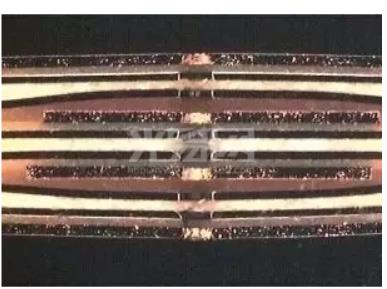Application of nanosecond UV laser in various PCB materials
Aug 17 , 2022Application of nanosecond UV laser in various PCB materials
Ultraviolet lasers are the best choice for various PCB material applications in many industrial fields, from the production of the most basic circuit boards, circuit wiring, to advanced processes such as the production of pocket-sized embedded chips. This material difference makes UV lasers the best choice for a variety of PCB material applications in many industrial fields, from the production of the most basic circuit boards, circuit wiring, to advanced processes such as the production of pocket-sized embedded chips.
Application 1: Surface Etching/Circuit Production
Ultraviolet lasers work quickly in the production of circuits, etching surface patterns onto circuit boards in minutes. This makes UV lasers the fastest way to produce PCB samples. The R&D department has noticed that more and more sample laboratories are being equipped with in-house UV laser systems.
Depending on optical instrument characterization, the size of the UV laser beam can reach 10-20 μm to produce flexible circuit traces. The application in Figure 2 shows the greatest advantage of UV light in producing circuit traces that are so tiny they need to be seen under a microscope.
The board measures 0.75" x 0.5" and consists of a sintered ceramic substrate and tungsten/nickel/copper/surface. The laser is capable of producing circuit traces of 2 mils with 1 mil pitch, resulting in an overall pitch of only 3 mils.
While using a laser beam to produce circuits is the fastest method for PCB samples, large-scale surface etching applications are best left to chemical processes.
Application 2: Disassembly of PCB
UV laser cutting is the best choice for large or small production, and it is also a good choice for PCB disassembly, especially when it needs to be applied to flexible or rigid-flex circuit boards. Disassembly is the removal of a single circuit board from a panel, which can be challenging given the ever-increasing flexibility of materials.
Mechanical disassembly methods such as V-groove cutting and automatic circuit board cutting can easily damage sensitive and thin substrates, causing trouble for electronic manufacturing services (EMS) companies when disassembling flexible and rigid-flex circuit boards.
Ultraviolet laser cutting can not only eliminate the impact of mechanical stress during the disassembly process such as edge processing, deformation and damage to circuit components, but also has less thermal stress than other lasers such as CO2 laser cutting.
The reduction in "cut bumpers" saves space, which means components can be placed closer to the edge of the trace, allowing more traces to fit on each board, maximizing efficiency and reaching the maximum limits of flexible circuit applications .
Application 3: Drilling holes
Another application that takes advantage of the small beam size and low stress properties of UV lasers is drilling, including through, micro, and blind buried vias. UV laser systems drill holes by focusing a vertical beam to cut straight through the substrate. Depending on the material used, holes as small as 10 μm can be drilled.
Ultraviolet lasers are especially useful for multi-layer drilling. Multilayer PCBs are hot die cast together using composite materials. These so-called "semi-cures" can separate, especially after processing with hotter lasers. However, the relatively stress-free nature of UV lasers solves this problem, as shown in Figure 4.
In the cross section shown, a 14 mil multilayer board is drilled with 4 mil diameter holes. This application on a flexible polyimide copper-coated substrate shows no separation between the layers. Another important point about the low stress properties of UV lasers: improved yield data. Yield is the percentage of usable circuit boards removed from a panel.
Application of UV Laser in Various PCB Materials
During the manufacturing process, many conditions can cause damage to a circuit board, including broken solder joints, cracked components, or delamination. Either factor can cause boards to be thrown into waste bins instead of shipping boxes on the production line.
Application 4: Deep Engraving
Another application that demonstrates the versatility of UV lasers is deep engraving, which encompasses many forms. Using the software control of the laser system, the laser beam is set for controlled ablation, i.e. the ability to cut a material at a desired depth, stop, continue and complete the desired depth before turning to another depth and starting another task processing.
Various in-depth applications include: small production for chip embedding and surface grinding to remove organic materials from metal surfaces.
UV lasers can also perform multi-step operations on substrates. On the polyethylene material, the first step is to use a laser to create a groove with a depth of 2 mils, the second step is to create a groove of 8 mils on the basis of the previous step, and the third step is a groove of 10 mils. This illustrates the overall user control provided by the UV laser system.

Conclusion: a one-size-fits-all approach
The most striking feature of UV lasers is their ability to perform all of these applications in a single step. What does this mean for making circuit boards? Instead of using simultaneously impactful processes and methods on different equipment to complete an application, a complete part can be obtained in a single machining operation.
This streamlined production approach helps eliminate quality control issues that arise when boards are transferred between different processes. The UV debris-free ablation properties also mean no post-processing cleaning is required.